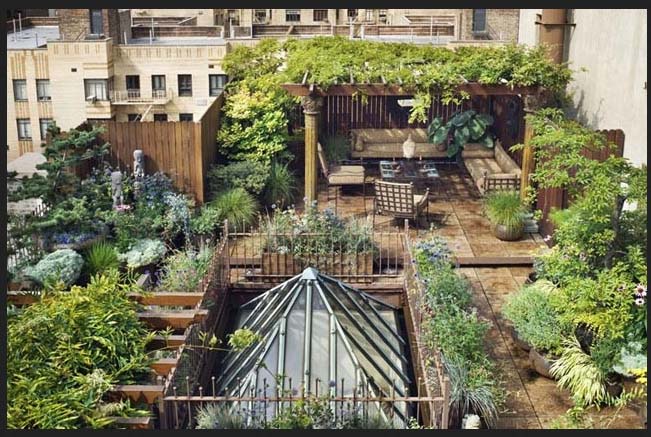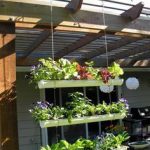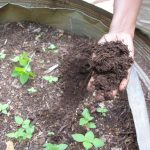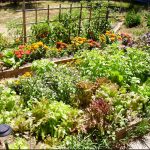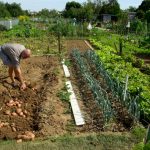7 Tricks to Getting the Most Out of Your Garden
Table of Contents
Here are same organic tips and tricks to get the most out of your planting space.
If you’re like most people, you want to maximize the potential of your garden. The good news is that there are a number of organic ways to get hundreds of pounds of tomatoes from a 4 foot by 25 foot bed and much, much more. The following tricks come from organic gardeners who have learned the tricks to getting the most out of every square foot of your garden space.
1. Build Up the Soil
First and foremost, you need to build up a nutrient-rich soil so that your plants can thrive. That not only means providing a high-quality compost and organic fertilizers, but also that those nutrients go deep into the soil so that all of the root system is surrounded by them. The deeper and richer the soil beneath the earth, the bigger and higher quality produce that you will get above the earth.
The best way to go deeper is actually to use raised beds. Studies have shown that raised beds can yield up to four times as much per square foot of garden space compared to normal garden spaces. This is partially due to the extra-looseness in the soil that helps more oxygen, water, and nutrients reach the roots. It also helps you more effectively space your plants by eliminating the space needed for paths.
Raised beds also help to reduce the amount of time you spend working in your garden. This is because the plants are closer together which allows them to block out sunlight and prevent or reduce weed growth. Additionally, raised beds save you time and energy by allowing you to more efficiently water and harvest your garden.
2. Rounded Beds
In addition to raising beds, garden experts have also found that rounding the beds rather than leaving them flat can help increase the amount of earth you have to work with. In fact, a bed that is five feet wide which is rounded can end up with 6 feet of total space. Although an extra one foot doesn’t sound like that much space, when you multiply that throughout your whole garden, you’re realize that there is a lot of untapped potential there. For example, there are a number of smaller greens such as spinach and lettuce that thrive along the edges.
3. Smarter Spacing
The way you space out and arrange your plants will have a huge impact on the yield you get from your plants. Rather than the traditional planting in rows or square patterns, you can optimize your garden space by choosing to use a triangular pattern. This will allow you to get up to 14 percent more plants per bed.
However, it is important that you don’t pack them in too tightly, either, as it is important to allow your plants to reach their full size if you want to get a full yield from them. One gardener experimented with the spacing of romaine lettuce by increasing the space in between plants by about 8 inches. He found that the harvest weight for each plant doubled.
You should also keep in mind that plants that are placed too closely together will be more susceptible to the spread of diseases and insect infestations.
4. Go Vertical
When it comes to gardening, the sky is literally the limit. There are many plants that thrive when they’re allowed to grow up instead of out like peas, beans, tomatoes, cucumbers, and melons. So, use this to your advantage by guiding them upward rather than outward.
There are also many different container-gardening options that allow you to grow more plants in less space by stacking plants and creating towers of containers. Growing plants vertically can save time by effectively reducing the amount of time you spend watering, maintaining, and harvesting your produce.
Vertical gardening also helps to increase your yield by increasing airflow to the roots of the plant reducing the risk of fungal diseases caused by poor circulation. Although you may think that plants that bear heavy fruits such as melons and cucumbers cannot grow upwards, they will develop thicker stems so that they can support the weight of their fruits, or you may also help support the developing fruits.
5. Mix It Up
Interplanting compatible crops saves space, too. Consider the classic Native American combination, the “three sisters”—corn, beans, and squash. Sturdy cornstalks support the pole beans, while squash grows freely on the ground below, shading out competing weeds. This combination works because the crops are compatible. Other compatible combinations include tomatoes, basil, and onions; leaf lettuce and peas or brassicas; carrots, onions, and radishes; and beets and celery.
6. Succeed With Successions
Succession planting allows you to grow more than one crop in a given space over the course of a growing season. That way, many gardeners are able to harvest three or even four crops from a single area. For instance, an early crop of leaf lettuce can be followed with a fast-maturing corn, and the corn followed by more greens or overwintered garlic—all within a single growing season. To get the most from your succession plantings:
- Use transplants. A transplant is already a month or so old when you plant it, and so will mature that much faster than a direct-seeded plant (one grown from seeds sown in the garden).
- Choose fast-maturing varieties.
- Replenish the soil with a ¼-to-½-inch layer of compost (about 2 cubic feet per 100 square feet) each time you replant. Work it into the top few inches of soil.
7. Stretch Your Season
Adding a few weeks to each end of the growing season can buy you enough time to grow yet another succession crop—say a planting of leaf lettuce, kale, or turnips—or to harvest more end-of-the-season tomatoes.
To get those extra weeks of production, you need to keep the air around your plants warm, even when the weather is cold, by using mulches, cloches, row covers, or coldframes.
Or give heat-loving crops (such as melons, peppers, and eggplants) an extra-early start by using two “blankets”—one to warm the air and one to warm the soil in early spring. About 6 to 8 weeks before the last frost date, preheat cold soil by covering it with either infrared-transmitting (IRT) mulch or black plastic, which will absorb heat. Then, cover the bed with a slitted, clear plastic tunnel. When the soil temperature reaches 65° to 70°F, set out plants and cover the black plastic mulch with straw to keep it from trapping too much heat. Remove the clear plastic tunnel when the air temperature warms and all danger of frost has passed. Install it again at the end of the season when temperatures cool.

